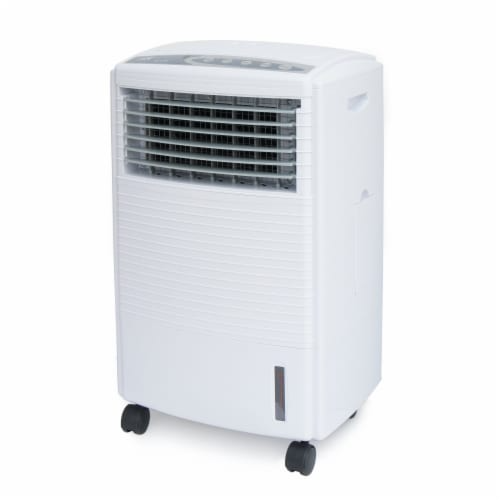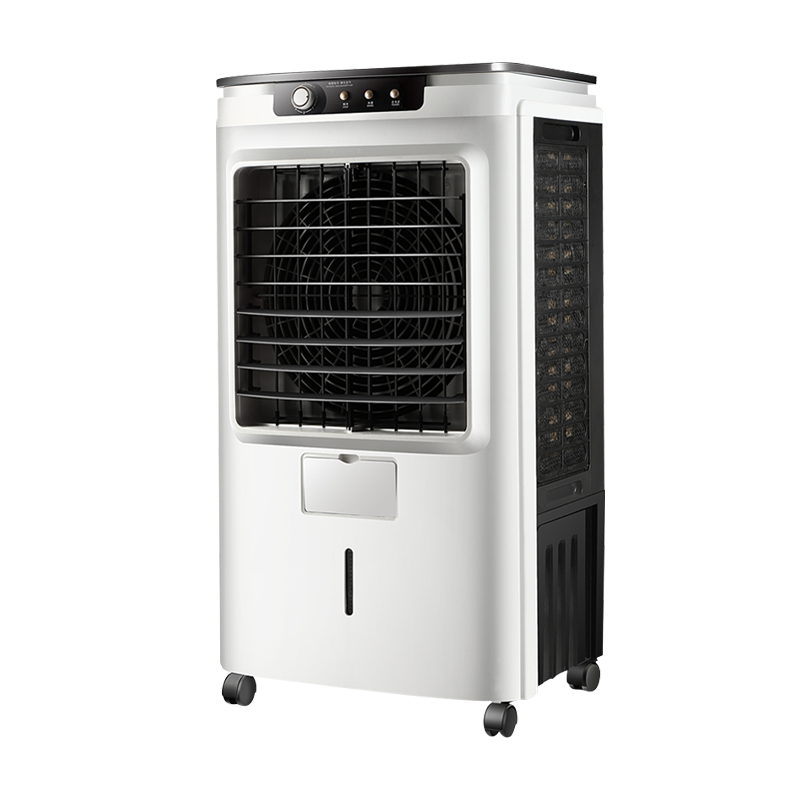Evaporative Air Cooler Manufacturer
As a professional OEM Environmentally Friendly Air Conditioning Cooling Manufacturer and ODM Industrial humidifier Factory, The evaporative wet curtain produced by the company has good water absorption and ventilation, strong cooling ability, long service life, and sterilization and algae prevention functions. It has been successfully applied in industrial plants with high-temperature operations such as evaporative air conditioners, evaporative cooling fans, humidifiers, animal husbandry, the greenhouse industry, the textile industry, hardware, as well as in public places such as shopping malls, internet cafes, supermarkets, etc., which can effectively improve indoor air quality, To prevent the spread of diseases caused by the use of air and truly achieve green environmental protection, energy conservation and emission reduction.
-
In the fields of modern industrial ventilation and commercial cooling, Evaporative Air Coolers (commonly known as eco-friendly air conditioners or eva...
READ MORE -
In the hot summer, evaporative air coolers (commonly known as eco-friendly air conditioners or water-cooled fans) have become the preferred cooling eq...
READ MORE -
An evaporative cooling pad, commonly known as a wet curtain, is a core component of modern high-efficiency cooling systems. Whether used in agricultur...
READ MORE -
In the sweltering summer, evaporative cooling fans are often a popular choice when looking for economical and efficient cooling solutions. How Evapora...
READ MORE
1. Working Principle
Evaporation Process: The Evaporative Air Cooler draws warm air through water-saturated pads. As the air passes through, water evaporates, absorbing heat and lowering the air temperature. The cooled air is then circulated back into the living space.
Humidity Factor: The efficiency of evaporative coolers is significantly influenced by the ambient humidity. They work better in low-humidity conditions, where the evaporation rate is higher.
2. Types of Evaporative Coolers
Direct Evaporative Coolers: These coolers use water-saturated pads directly in the airflow path. They provide immediate cooling and humidity.
Indirect Evaporative Coolers: These coolers cool the air without adding humidity, using a heat exchanger. They are suitable for more humid climates.
3. Key Components
Cooling Pads: Made of cellulose or synthetic materials, these pads absorb water and facilitate the evaporation process.
Fans: High-efficiency fans are crucial for drawing air through the pads and distributing cooled air throughout the space.
Water Pump: Circulates water over the pads, ensuring they remain saturated for optimal cooling.
Control Systems: Include manual or digital controls for adjusting fan speed and water flow, often with timers and remote access.
4. Energy Efficiency
Low Power Consumption: Evaporative coolers generally consume less electricity compared to traditional air conditioning systems, making them a cost-effective option.
Sustainable Cooling: By using the natural process of evaporation, these coolers have a smaller carbon footprint and are more environmentally friendly.
5. Applications
Residential Use: Ideal for homes in arid regions, they provide effective cooling at a lower cost than air conditioning.
Commercial Use: Widely used in warehouses, factories, and agricultural settings, where large spaces need cooling without high energy costs.
Outdoor Spaces: Increasingly popular for patios, sports facilities, and event venues.
6. Maintenance Considerations
Regular Cleaning: Pads and water reservoirs should be cleaned to prevent mold and mineral buildup.
Seasonal Maintenance: At the end of the cooling season, units should be drained, cleaned, and stored properly.
Pad Replacement: Cooling pads typically need replacement every one to two years, depending on water quality and usage.
7. Market Trends
Technological Advances: Innovations in fan design, cooling pad materials, and smart technology integrations are enhancing performance and user experience.
Smart Cooling Solutions: Many modern units now feature smart controls that allow users to adjust settings via mobile apps, integrating with home automation systems.
Eco-Friendly Designs: Manufacturers are increasingly focusing on sustainable materials and energy-efficient designs to appeal to environmentally conscious consumers.
8. Challenges
Humidity Limitations: In high-humidity areas, the cooling effectiveness of evaporative coolers diminishes, limiting their applicability.
Water Quality: Poor water quality can lead to mineral buildup and reduced efficiency, necessitating the use of treated water for optimal performance.
 01
01
Evaporative Air Cooler with Cooling Pad
 02
02
3-speed Adjustment Evaporative Air Cooler
 03
03
Evaporative Air Cooler Chiller, 30L Water Tank
 04
04
450W Portable Evaporative Air Cooler Chiller, 45L Water Tank
 05
05
150W Portable Evaporative Air Cooler Chiller, 45L Water Tank
 06
06
250W Evaporative Air Cooler Chiller, 45L Water Tank
 07
07
250W Evaporative Air Cooler Chiller, 50L Water Tank
 08
08
450W Evaporative Air Cooler Chiller, 75L Water Tank
 CONTACT US
CONTACT US English
English 中文简体
中文简体 عربى
عربى Tiếng Việt
Tiếng Việt